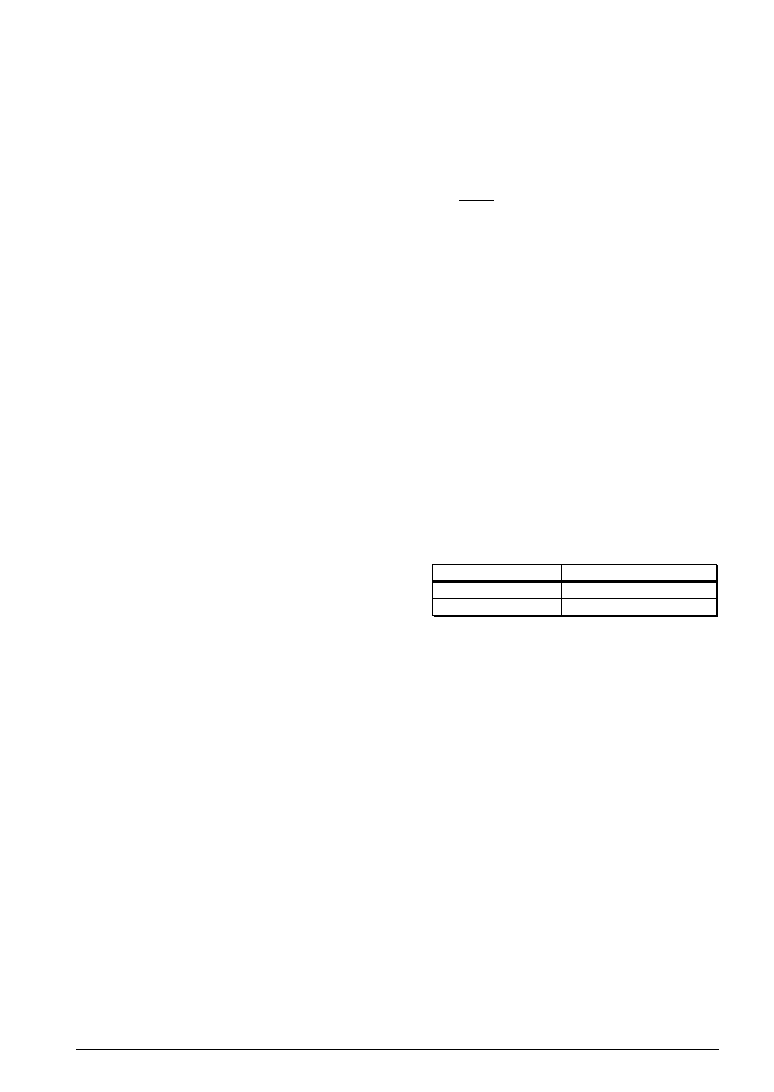- 您現(xiàn)在的位置:買賣IC網(wǎng) > PDF目錄98069 > S1C88316D 8-BIT, MROM, 8.2 MHz, MICROCONTROLLER, UUC172 PDF資料下載
參數(shù)資料
| 型號: | S1C88316D |
| 元件分類: | 微控制器/微處理器 |
| 英文描述: | 8-BIT, MROM, 8.2 MHz, MICROCONTROLLER, UUC172 |
| 封裝: | DIE-172 |
| 文件頁數(shù): | 267/344頁 |
| 文件大小: | 2401K |
| 代理商: | S1C88316D |
第1頁第2頁第3頁第4頁第5頁第6頁第7頁第8頁第9頁第10頁第11頁第12頁第13頁第14頁第15頁第16頁第17頁第18頁第19頁第20頁第21頁第22頁第23頁第24頁第25頁第26頁第27頁第28頁第29頁第30頁第31頁第32頁第33頁第34頁第35頁第36頁第37頁第38頁第39頁第40頁第41頁第42頁第43頁第44頁第45頁第46頁第47頁第48頁第49頁第50頁第51頁第52頁第53頁第54頁第55頁第56頁第57頁第58頁第59頁第60頁第61頁第62頁第63頁第64頁第65頁第66頁第67頁第68頁第69頁第70頁第71頁第72頁第73頁第74頁第75頁第76頁第77頁第78頁第79頁第80頁第81頁第82頁第83頁第84頁第85頁第86頁第87頁第88頁第89頁第90頁第91頁第92頁第93頁第94頁第95頁第96頁第97頁第98頁第99頁第100頁第101頁第102頁第103頁第104頁第105頁第106頁第107頁第108頁第109頁第110頁第111頁第112頁第113頁第114頁第115頁第116頁第117頁第118頁第119頁第120頁第121頁第122頁第123頁第124頁第125頁第126頁第127頁第128頁第129頁第130頁第131頁第132頁第133頁第134頁第135頁第136頁第137頁第138頁第139頁第140頁第141頁第142頁第143頁第144頁第145頁第146頁第147頁第148頁第149頁第150頁第151頁第152頁第153頁第154頁第155頁第156頁第157頁第158頁第159頁第160頁第161頁第162頁第163頁第164頁第165頁第166頁第167頁第168頁第169頁第170頁第171頁第172頁第173頁第174頁第175頁第176頁第177頁第178頁第179頁第180頁第181頁第182頁第183頁第184頁第185頁第186頁第187頁第188頁第189頁第190頁第191頁第192頁第193頁第194頁第195頁第196頁第197頁第198頁第199頁第200頁第201頁第202頁第203頁第204頁第205頁第206頁第207頁第208頁第209頁第210頁第211頁第212頁第213頁第214頁第215頁第216頁第217頁第218頁第219頁第220頁第221頁第222頁第223頁第224頁第225頁第226頁第227頁第228頁第229頁第230頁第231頁第232頁第233頁第234頁第235頁第236頁第237頁第238頁第239頁第240頁第241頁第242頁第243頁第244頁第245頁第246頁第247頁第248頁第249頁第250頁第251頁第252頁第253頁第254頁第255頁第256頁第257頁第258頁第259頁第260頁第261頁第262頁第263頁第264頁第265頁第266頁當前第267頁第268頁第269頁第270頁第271頁第272頁第273頁第274頁第275頁第276頁第277頁第278頁第279頁第280頁第281頁第282頁第283頁第284頁第285頁第286頁第287頁第288頁第289頁第290頁第291頁第292頁第293頁第294頁第295頁第296頁第297頁第298頁第299頁第300頁第301頁第302頁第303頁第304頁第305頁第306頁第307頁第308頁第309頁第310頁第311頁第312頁第313頁第314頁第315頁第316頁第317頁第318頁第319頁第320頁第321頁第322頁第323頁第324頁第325頁第326頁第327頁第328頁第329頁第330頁第331頁第332頁第333頁第334頁第335頁第336頁第337頁第338頁第339頁第340頁第341頁第342頁第343頁第344頁

S1C88348/317/316/308 TECHNICAL SOFTWARE
EPSON
II-131
APPENDIX C PROGRAMMING NOTES
(2) When the FOUT frequency is made "fOSC3/n",
you must turn on the OSC3 oscillation circuit
before outputting FOUT. A time interval of
several msec to several 10 msec, from the
turning ON of the OSC3 oscillation circuit to
until the oscillation stabilizes, is necessary, due
to the oscillation element that is used. Conse-
quently, if an abnormality occurs as the result of
an unstable FOUT signal being output exter-
nally, you should allow an adequate waiting
time after turning ON of the OSC3 oscillation,
before turning outputting FOUT. (The oscilla-
tion start time will vary somewhat depending
on the oscillator and on the externally attached
parts. Refer to the oscillation start time example
indicated in Chapter 7/Technical Hardware,
"ELECTRICAL CHARACTERISTICS".)
At initial reset, OSC3 oscillation circuit is set to
OFF state.
(3) The SLP instruction has executed when the
special output signals (TOUT, FOUT and BZ)
are in the enable status, an unstable clock is
output for the special output at the time of
return from the SLEEP state. Consequently,
when shifting to the SLEEP state, you should set
the special output signal to the disable status
prior to executing the SLP instruction.
I/O Port (P Port)
(1) When changing the port terminal from LOW
level to HIGH with the built-in pull-up resistor,
a delay in the waveform rise time will occur
depending on the time constant of the pull-up
resistor and the load capacitance of the termi-
nal. It is necessary to set an appropriate wait
time for introduction of an I/O port. Make this
wait time the amount of time or more calculated
by the following expression.
Wait time = RIN x (CIN + load capacitance on the
board) x 1.6 [sec]
RIN: Pull up resistance Max. value
CIN: Terminal capacitance Max. value
(2) When the analog comparator is used, "0" must
always be set for the I/O control registers
(IOC14–IOC15 or IOC16–IOC17, or both) of I/O
ports which will become input terminals.
Serial Interface
(1) Be sure to initialize the serial interface mode in
the transmitting/receiving disable status (TXEN
= RXEN = "0").
(2) Do not perform double trigger (writing "1") to
TXTRG (RXTRG) when the serial interface is in
the transmitting (receiving) operation. Further-
more, do not execute the SLP instruction. (When
executing the SLP instruction, set TXEN =
RXEN = "0".)
(3) In the clock synchronous mode, since one clock
line (SCLK) is shared for both transmitting and
receiving, transmitting and receiving cannot be
performed simultaneously. (Half duplex only is
possible in clock synchronous mode.)
Consequently, be sure not to write "1" to
RXTRG (TXTRG) when TXTRG (RXTRG) is "1".
(4) When a parity error or flaming error is gener-
ated during receiving in the asynchronous
mode, the receiving error interrupt factor flag
FSERR is set to "1" prior to the receiving
complete interrupt factor flag FSREC for the
time indicated in Table C.1. Consequently,
when an error is generated, you should reset the
receiving complete interrupt factor flag FSREC
to "0" by providing a wait time in error process-
ing routines and similar routines.
When an overrun error is generated, the
receiving complete interrupt factor flag FSREC
is not set to "1" and a receiving complete
interrupt is not generated.
Table C.1 Time difference between FSERR
and FSREC on error generation
Clock source
Time difference
fOSC3 / n
Programmable timer
1/2 cycles of fOSC3 / n
1 cycle of timer 1 underflow
(5) When the demultiplied signal of the OSC3
oscillation circuit is made the clock source, it is
necessary to turn the OSC3 oscillation ON, prior
to using the serial interface.
A time interval of several msec to several 10
msec, from the turning ON of the OSC3 oscilla-
tion circuit to until the oscillation stabilizes, is
necessary, due to the oscillation element that is
used. Consequently, you should allow an
adequate waiting time after turning ON of the
OSC3 oscillation, before starting transmitting/
receiving of serial interface. (The oscillation
start time will vary somewhat depending on the
oscillator and on the externally attached parts.
Refer to the oscillation start time example
indicated in Chapter 7/Technical Hardware,
"ELECTRICAL CHARACTERISTICS".)
At initial reset, the OSC3 oscillation circuit is set
to OFF status.
相關(guān)PDF資料 |
PDF描述 |
|---|---|
| S1C88316F | 8-BIT, MROM, 8.2 MHz, MICROCONTROLLER, PQFP16 |
| S1C88409D | 8-BIT, MROM, 8.8 MHz, MICROCONTROLLER, UUC108 |
| S1C88816D | 8-BIT, MROM, 8.2 MHz, MICROCONTROLLER, UUC164 |
| S1C88832F0A0100 | MICROCONTROLLER, PQFP128 |
| S1C88848D0A0100 | 8-BIT, MROM, 8.2 MHz, MICROCONTROLLER, UUC192 |
相關(guān)代理商/技術(shù)參數(shù) |
參數(shù)描述 |
|---|---|
| S1C88349 | 制造商:EPSON 制造商全稱:EPSON 功能描述:8-bit Single Chip Microcomputer |
| S1C88649 | 制造商:EPSON 制造商全稱:EPSON 功能描述:8-bit Single Chip Microcomputer |
| S1C88650 | 制造商:EPSON 制造商全稱:EPSON 功能描述:8-bit Single Chip Microcomputer |
| S1C88655 | 制造商:EPSON 制造商全稱:EPSON 功能描述:8-bit Single Chip Microcomputer |
| S1C88816 | 制造商:EPSON 制造商全稱:EPSON 功能描述:8-bit Single Chip Microcomputer |
發(fā)布緊急采購,3分鐘左右您將得到回復。